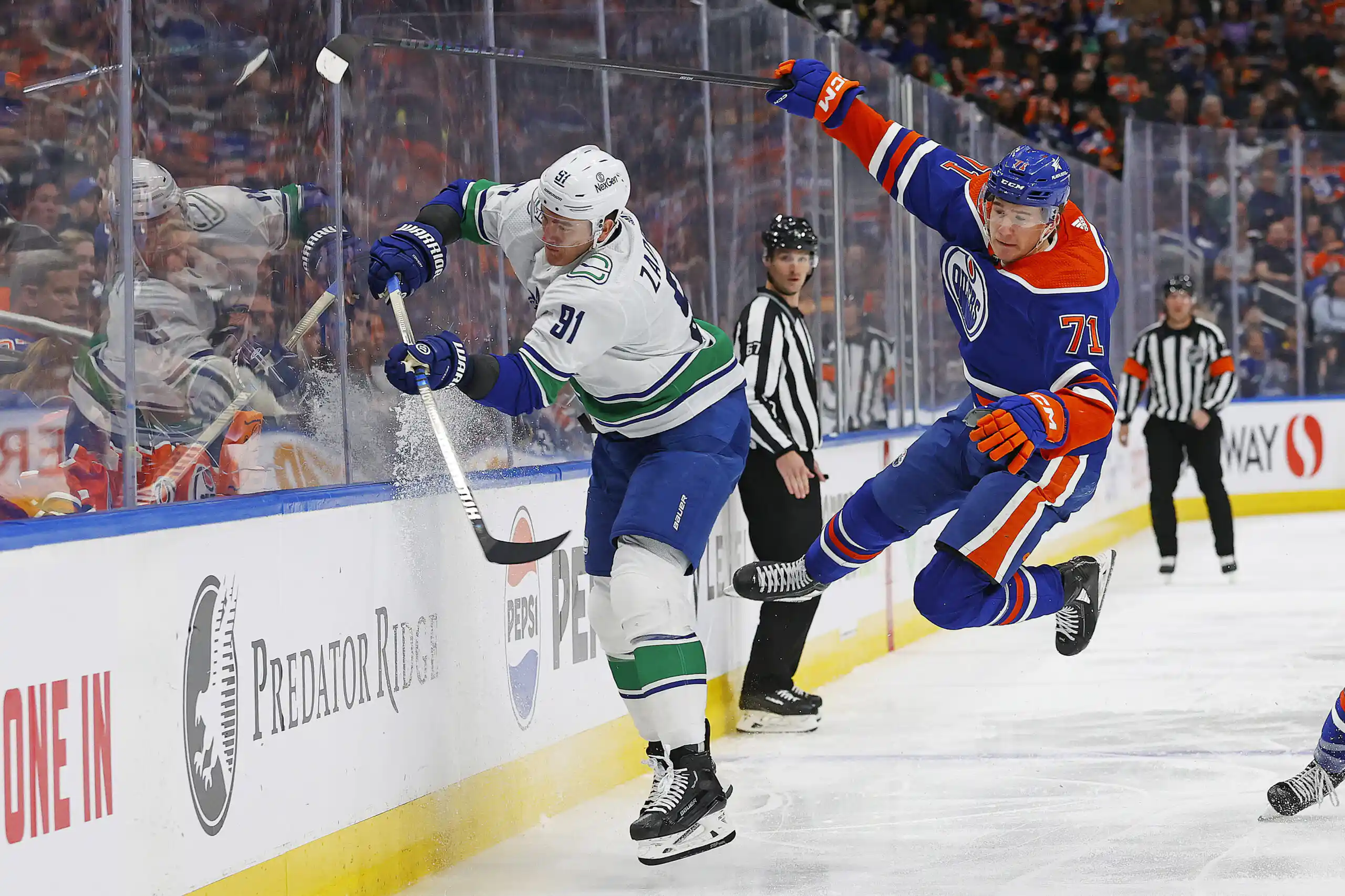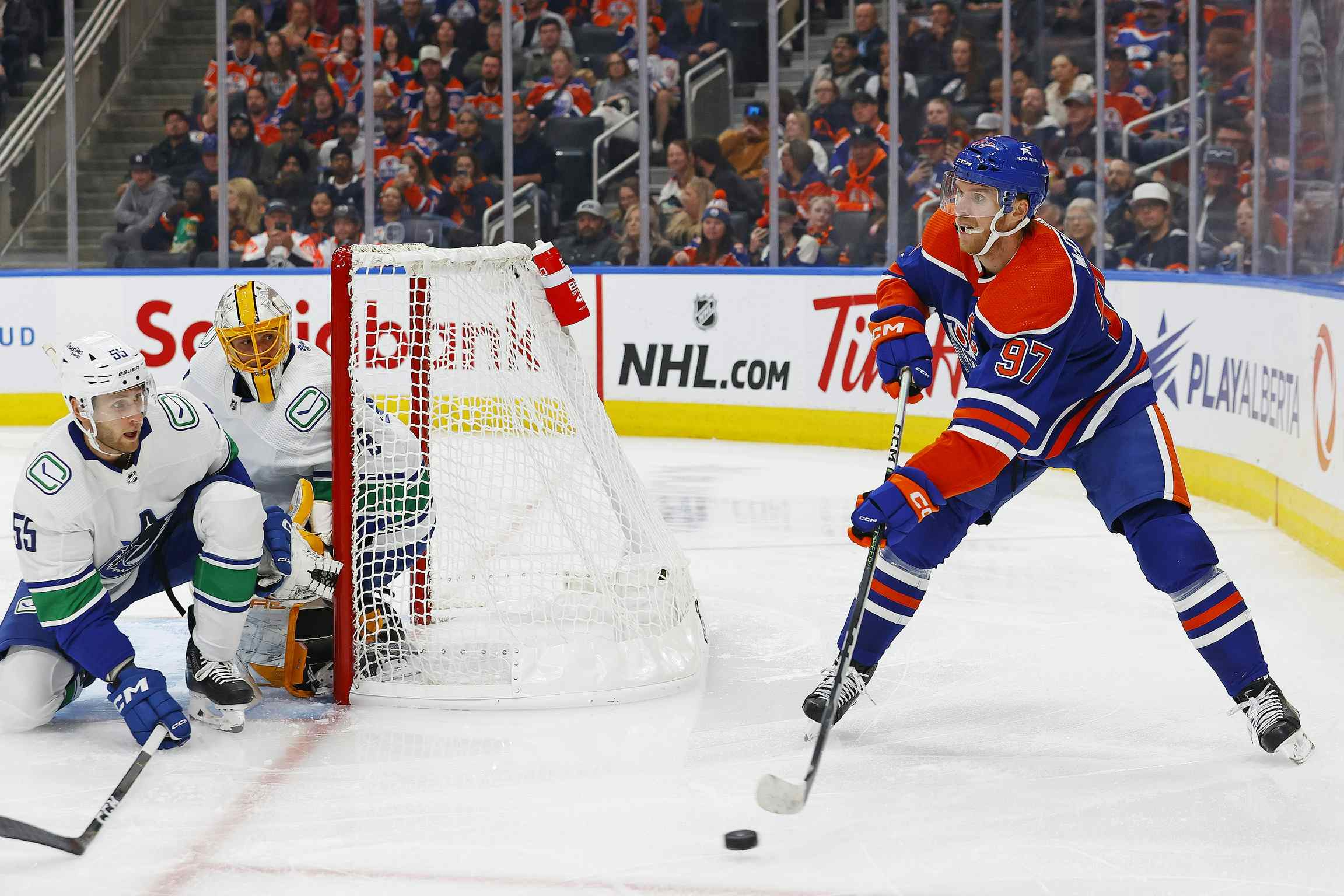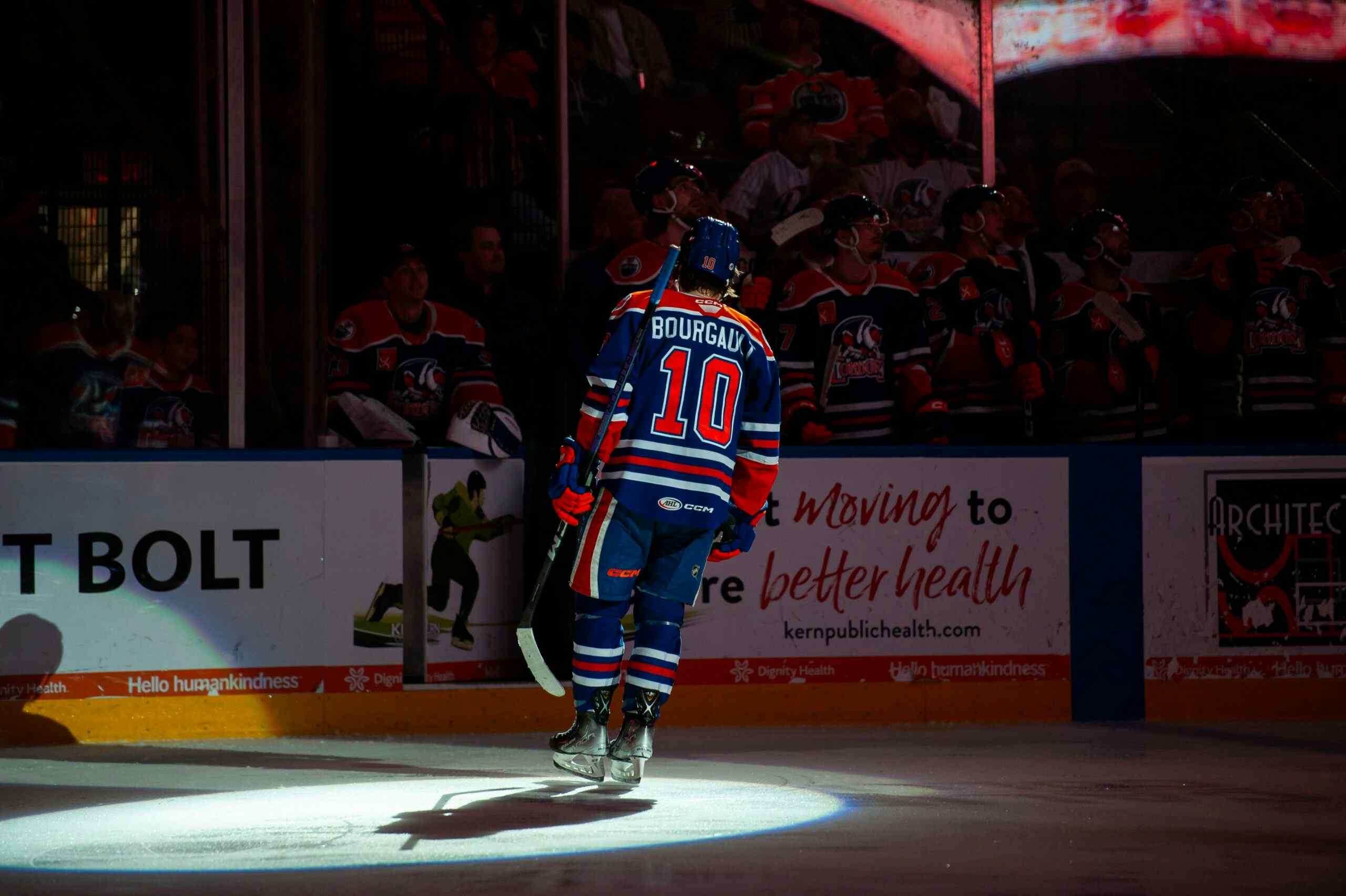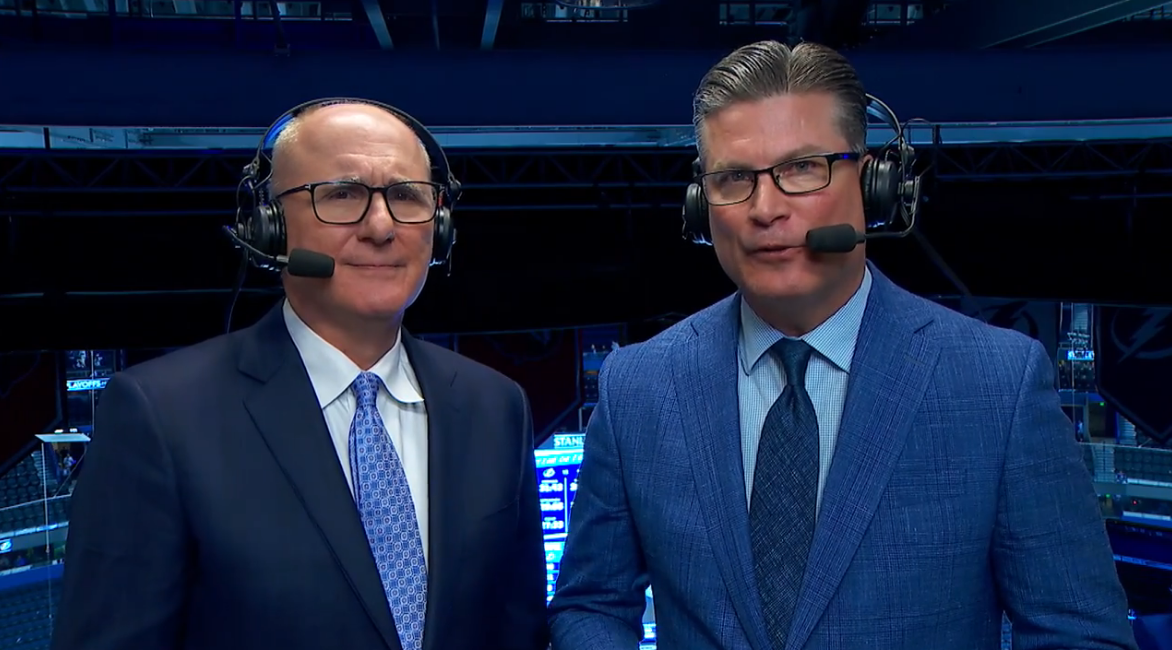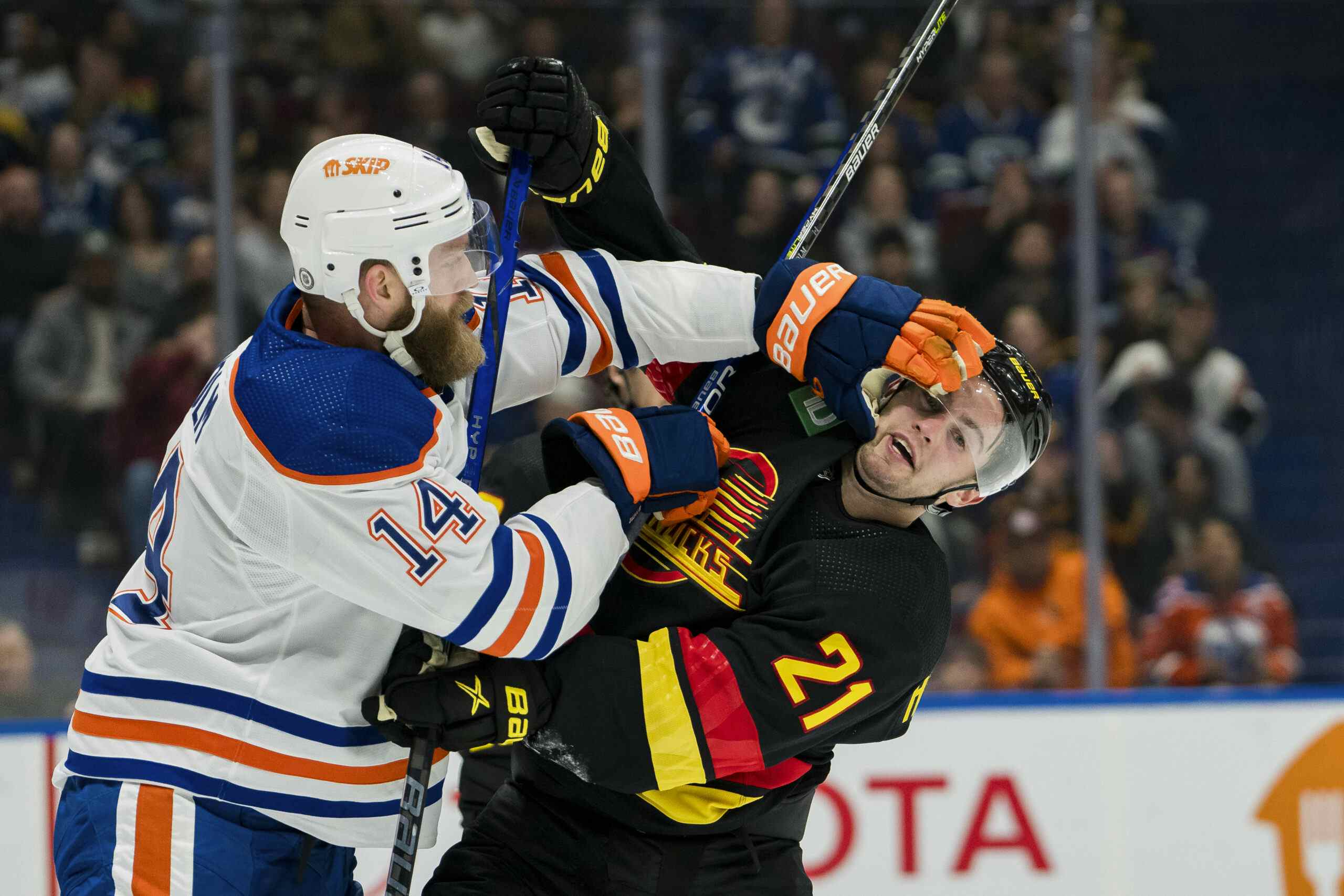How well did Adam Larsson play against top opponents last year?
On
Friday, I looked at how Edmonton’s defencemen fared when played against the
best opponents in the NHL last year. Immediately and repeatedly I was asked to
show how newcomer Adam Larsson did in the same role.
Friday, I looked at how Edmonton’s defencemen fared when played against the
best opponents in the NHL last year. Immediately and repeatedly I was asked to
show how newcomer Adam Larsson did in the same role.
The answer is that it’s complicated.
I went over the process in Friday’s post, which consists of
making a list of the 30 best centres in the league and then using Puckalytics’
SuperWOWY function to see what happened when a defenceman was on the ice
against those players.
making a list of the 30 best centres in the league and then using Puckalytics’
SuperWOWY function to see what happened when a defenceman was on the ice
against those players.
The wrinkle with New Jersey is that the Devils’ 5-on-5 shot
metrics were actually worse than the Oilers last year; it’s just that having
Cory Schneider in net makes a ton of difference. Otherwise, numbers for players
on that team compare remarkably well with numbers from Edmonton. I’ve also included Damon Severson here, who was the Devils’ other primary right-shot defenceman.
metrics were actually worse than the Oilers last year; it’s just that having
Cory Schneider in net makes a ton of difference. Otherwise, numbers for players
on that team compare remarkably well with numbers from Edmonton. I’ve also included Damon Severson here, who was the Devils’ other primary right-shot defenceman.
The Results
|
So, the place to start is on the Corsi side. New Jersey got
absolutely crushed on the shot clock when Larsson was on the ice against good
players. Even if we give him a generous adjustment based on his team’s slightly
inferior results, things look bad.
absolutely crushed on the shot clock when Larsson was on the ice against good
players. Even if we give him a generous adjustment based on his team’s slightly
inferior results, things look bad.
Having said that, even here at the worst part of the
numbers, there’s an interesting tell. In terms of preventing shots against, the
Devils were fantastic with Larsson on the ice. Despite his awful differential,
his Corsi against totals are better than anyone
on the Oilers. Given some of his matchups, that’s a pretty desirable trait. However, as Severson demonstrates, in part that’s also just a team trait.
numbers, there’s an interesting tell. In terms of preventing shots against, the
Devils were fantastic with Larsson on the ice. Despite his awful differential,
his Corsi against totals are better than anyone
on the Oilers. Given some of his matchups, that’s a pretty desirable trait. However, as Severson demonstrates, in part that’s also just a team trait.
The goal numbers are a lot better than the Corsi totals, and
if they hold true Larsson’s going to be fantastic. The problem is that we’re
talking about 33 goals in total (17 for, 16 against) as opposed to over 800 shot
attempts (332 for, 499 against), which makes it easier to trust the shot data.
if they hold true Larsson’s going to be fantastic. The problem is that we’re
talking about 33 goals in total (17 for, 16 against) as opposed to over 800 shot
attempts (332 for, 499 against), which makes it easier to trust the shot data.
Additionally, Larsson got a lot of help from the percentages
this year. When we add his shooting and save percentage (the combined total is
called PDO) at 5-on-5 over the years, we can see that this isn’t normal. A
combined total of 100.0 is league average:
this year. When we add his shooting and save percentage (the combined total is
called PDO) at 5-on-5 over the years, we can see that this isn’t normal. A
combined total of 100.0 is league average:
- 2011-12: 8.3 SH% + 0.912 SV% = 99.5 PDO (-0.5 below average)
- 2012-13: 9.3 SH% + 0.907 SV% = 99.9 PDO (-0.1 below average)
- 2013-14: 4.7 SH% + 0.916 SV% = 96.3 PDO (-3.7 below average)
- 2014-15: 7.1 SH% + 0.935 SV% = 100.6 PDO (0.6 above average)
- 2015-16: 7.8 SH% + 0.946 SV% = 102.3 PDO (-2.3 above average)
Now, some will argue that perhaps Larsson’s high PDO and in
particular his improved on-ice save percentage the last two years is a result
of his defensive development, and that may well be part of it. However, when I
look at a
list of long-serving NHL defencemen I get skeptical, because:
particular his improved on-ice save percentage the last two years is a result
of his defensive development, and that may well be part of it. However, when I
look at a
list of long-serving NHL defencemen I get skeptical, because:
- Nobody on the list of 112 has sustained a 0.935 on-ice save
percentage. - 101 of the 112 players (90.2%) have a PDO within one
percentage point of 100.0. - The highest names on the list are not only very good
defencemen, but also have played with one of Carey Price, Henrik Lundqvist or
Tuukka Rask for virtually their entire careers.
So the goal numbers look great, but I don’t trust them. I’m
also skeptical that it’s a coincidence that Edmonton fell in love with the
player in the same year that his PDO shot through the roof.
also skeptical that it’s a coincidence that Edmonton fell in love with the
player in the same year that his PDO shot through the roof.
However, it’s also important to cut Larsson some slack that
we aren’t cutting other defencemen on this list, because he contended with a
unique challenge: zone starts.
we aren’t cutting other defencemen on this list, because he contended with a
unique challenge: zone starts.
There are analysts out there who will say that zone starts
don’t matter, because so many shifts start in the neutral zone or on the fly.
For a lot of players, they’re right, but some players have such extreme usage
that it’s hard not to imagine there being an effect. And Larsson’s usage is
beyond extreme.
don’t matter, because so many shifts start in the neutral zone or on the fly.
For a lot of players, they’re right, but some players have such extreme usage
that it’s hard not to imagine there being an effect. And Larsson’s usage is
beyond extreme.

I went back and re-ran Mark Fayne’s numbers, because he was
the posterboy in Edmonton for getting stuck in nasty defensive zone
assignments. Here’s what an average hour looked like for him, when playing
against top lines:
the posterboy in Edmonton for getting stuck in nasty defensive zone
assignments. Here’s what an average hour looked like for him, when playing
against top lines:
- 17.5 offensive zone faceoffs
- 24.4 defensive zone faceoffs
- a total of seven extra defensive zone draws per hour
And here’s an average hour for Larsson:
- 15.6 offensive zone faceoffs
- 28.0 defensive zone faceoffs
- a total of 12 extra defensive zone draws per hour
So putting that another way: Imagine the defenceman that
Todd McLellan and his coaching staff absolutely wanted to toss to the wolves
more than anyone else. Now imagine a defenceman on another team who had it
twice as bad. That’s Larsson. His usage was so extreme that it’s difficult to
compensate for, and even if he gets Fayne-level minutes next year his numbers
should improve.
Todd McLellan and his coaching staff absolutely wanted to toss to the wolves
more than anyone else. Now imagine a defenceman on another team who had it
twice as bad. That’s Larsson. His usage was so extreme that it’s difficult to
compensate for, and even if he gets Fayne-level minutes next year his numbers
should improve.
The numbers I’ve provided are open to interpretation, but
when I take team and usage effects into account I tend to think that Larsson’s
shot metrics should improve a fair bit. However, he is going to have a tough
time matching last season’s exceptional on-ice goal numbers, even with improved
shot metrics. Significant regression there strikes me as inevitable.
when I take team and usage effects into account I tend to think that Larsson’s
shot metrics should improve a fair bit. However, he is going to have a tough
time matching last season’s exceptional on-ice goal numbers, even with improved
shot metrics. Significant regression there strikes me as inevitable.
Bottom line? It wouldn’t surprise me in the least if he’s an
effective shutdown defenceman, but I don’t see him as a world-beater.
effective shutdown defenceman, but I don’t see him as a world-beater.
RECENTLY BY JONATHAN WILLIS
Recent articles from Jonathan Willis

